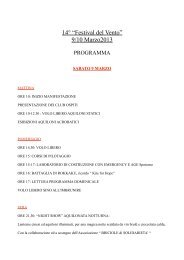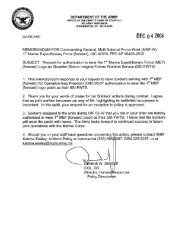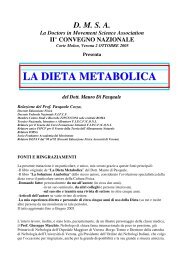Science vs. religion : what scientists really think - File PDF
Science vs. religion : what scientists really think - File PDF
Science vs. religion : what scientists really think - File PDF
You also want an ePaper? Increase the reach of your titles
YUMPU automatically turns print PDFs into web optimized ePapers that Google loves.
NOTES TO PAGES 71–81199Chapter 51. Phys 15, conducted August 30, 2005.2. PS 13, conducted August 9, 2005.3. Rawlings, “State of the University Address.”4. For a more in-depth explanation of the lawsuit brought by Christian high schools,see Fain, “Christian Schools Sue the University of California Over Credit for Courses.”In August 2008, Judge Otero ruled against plaintiff ACSI, upholding the University ofCalifornia’s standards. The university had found that the books “didn’t encourage critical<strong>think</strong>ing skills and failed to cover ‘major topics, themes and components’” and werenot appropriate preparation for college-level science courses.5. The Higher Education Research Initiative (HERI) at University of California, LosAngeles, has surveyed university students about their religious beliefs and views aboutspirituality and found that students are overwhelmingly interested in spiritual matters.For more information about the study, see Bonderud and Fleischer, “College StudentsShow High Levels of Spiritual and Religious Engagement.” For more evidence that spiritualityand traditional forms of <strong>religion</strong> are increasing on university campuses, evenelite university campuses, see Benne, Quality Without Soul . See Cherry et al., Religion onCampus , for a discussion of the four-university study that shows students are interestedin traditional <strong>religion</strong> and even more interested in nontraditional forms of spirituality.See also Noden, “Keeping the Faith.”6. PS 21, conducted October 6, 2005.7. For more information about language codes, see Bernstein, Class, Codes, and Control .8. Chem 30, conducted March 15, 2006.9. Bio 6, conducted July 8, 2005.10. Chem 15, conducted October 11, 2005.11. Separation of church and state as a concept can be traced to Thomas Jefferson’s1802 letter to the Danbury (Connecticut) Baptists, where he mentioned the first amendmentof the U.S. Constitution as creating a wall that divides the church and the state.According to Jefferson, government should remain secular, and freedom of religiousexercise should be protected. See Bergh, The Writings of Thomas Jefferson .12. Econ 23, conducted February 28, 2006.13. Based on quantitative analyses of the in-depth interviews, 20 of the 38 political <strong>scientists</strong>interviewed were asked directly if <strong>religion</strong> ever came up in teaching or personal interactionswith students. Of these 20, all said that at some point <strong>religion</strong> had come into a classroomor informal teaching setting (such as meeting with students during office hours).14. PS 8, conducted July 26, 2005.15. For different views of how the public views evolution, see Hess, “Should IntelligentDesign Be Taught in Social Studies Courses?” and Mazur, “Believers and Disbelievers inEvolution.”16. This point is in keeping with much of the science-and-technology studies literature.See, for example, chapter 5, “Hybridizing Credibilities,” in Gieryn, CulturalBoundaries of <strong>Science</strong> .
















